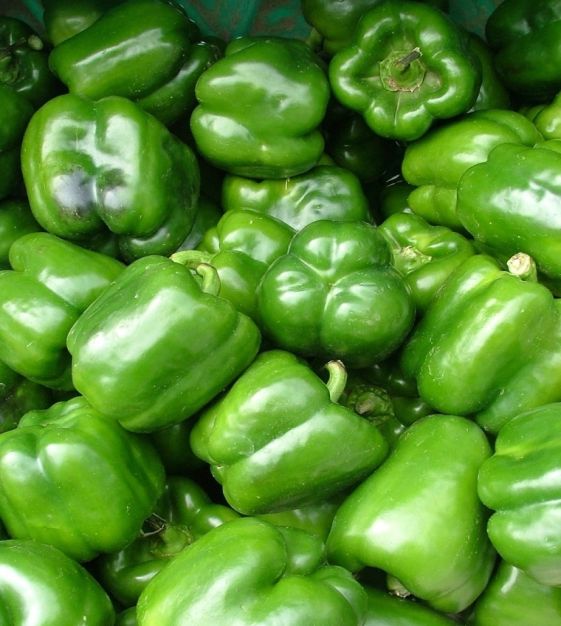Back to Top
Autumn Bell Pepper
65-70 days. This new variety is beautiful, productive and delicious. Autumn Bell's well-leafed, compact plant yields scads of three- to four-lobed, thick-walled blocky fruits weighing in at about 12 ounces each or about 4" long and wide. Each fruit starts shiny dark green and matures to brilliant fire engine-red with a sweet flavor and a crisp bite. Widely adaptable, it is also resistant to tomato mosaic virus and phytophthora. (OP.)
One packet of about 30 seeds
One packet of about 30 seeds
- Buy 10 for $4.20 each and save 10%
- Buy 50 for $3.50 each and save 25%
- Information
- Gardening Tips
Peppers ought to be experienced right off the vine after harvest. Best raised as transplants sown indoors 6 to 8 weeks prior to setting out in full sun after the last spring frost date, they like rich soil and need regular additional fertilizing. They need at least 10 weeks of hot weather to produce well and should be enjoyed soon after harvest. To protect Peppers from sunburn, pinch plants to encourage leaf growth. Keep Peppers picked to sustain production levels. At the height of harvest, hold a roast. Place picked Peppers on a hot grill, turning them until all sides are charred and blistered black. Put them in a paper bag on a tray and close the bag tight so the steam detaches the skins. Once cool, remove the skins, stems, membrane and seeds, and freeze in airtight plastic bags for use through the winter. (See Hot Chile Peppers for Cajun Bell Peppers, which earned a spot in the Hot Chile Peppers with a 100 to 1,000 Scoville heat rating.) Deer resistant.
Average seed life: 2 years.
Average seed life: 2 years.
Peppers ought to be experienced right off the vine after harvest. Best raised as transplants sown indoors 6 to 8 weeks prior to setting out in full sun after the last spring frost date, they like rich soil and need regular additional fertilizing. They need at least 10 weeks of hot weather to produce well and should be enjoyed soon after harvest. To protect Peppers from sunburn, pinch plants to encourage leaf growth. Keep Peppers picked to sustain production levels. At the height of harvest, hold a roast. Place picked Peppers on a hot grill, turning them until all sides are charred and blistered black. Put them in a paper bag on a tray and close the bag tight so the steam detaches the skins. Once cool, remove the skins, stems, membrane and seeds, and freeze in airtight plastic bags for use through the winter. (See Hot Chile Peppers for Cajun Bell Peppers, which earned a spot in the Hot Chile Peppers with a 100 to 1,000 Scoville heat rating.) Deer resistant.
Average seed life: 2 years.
Average seed life: 2 years.




